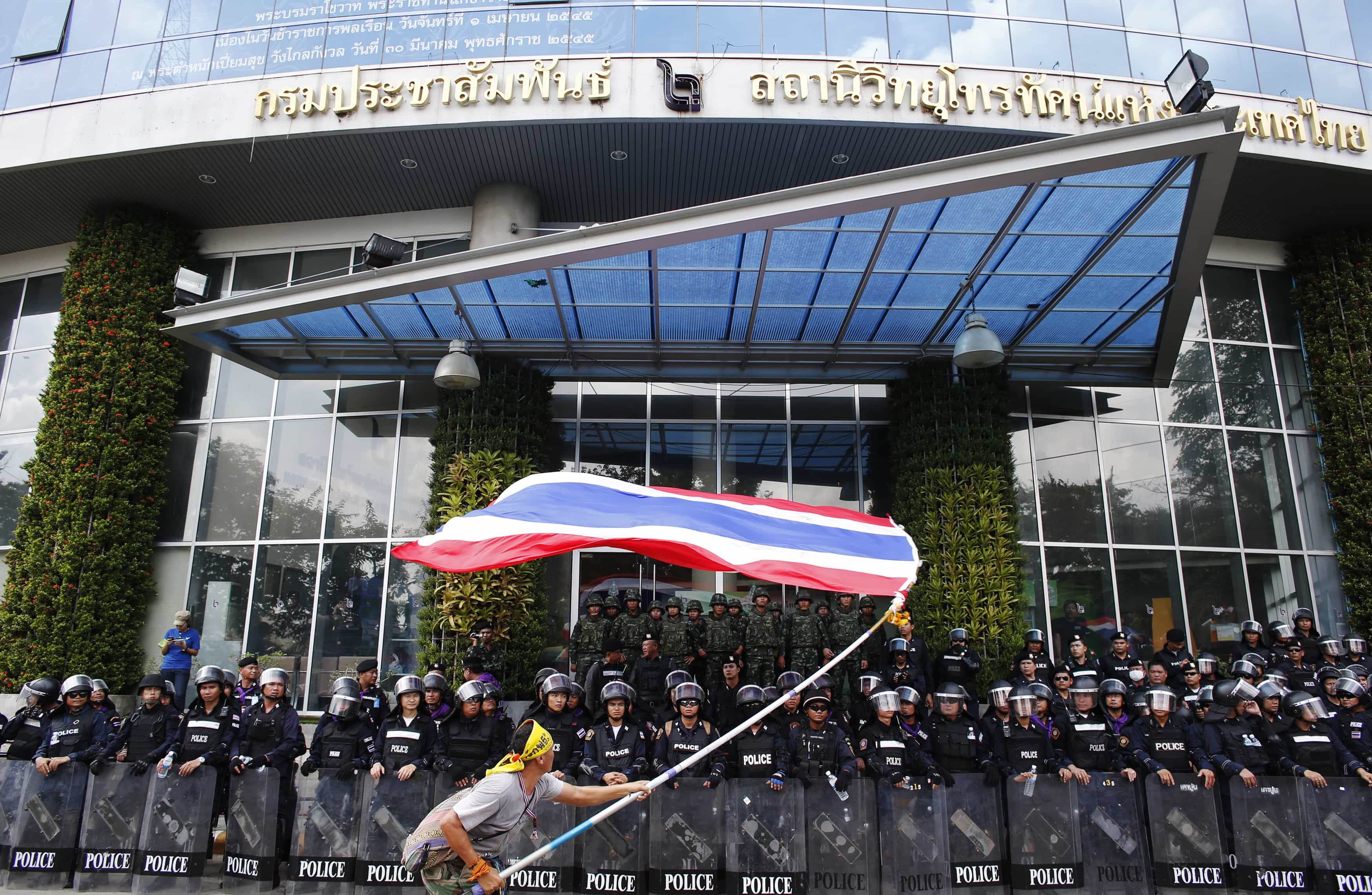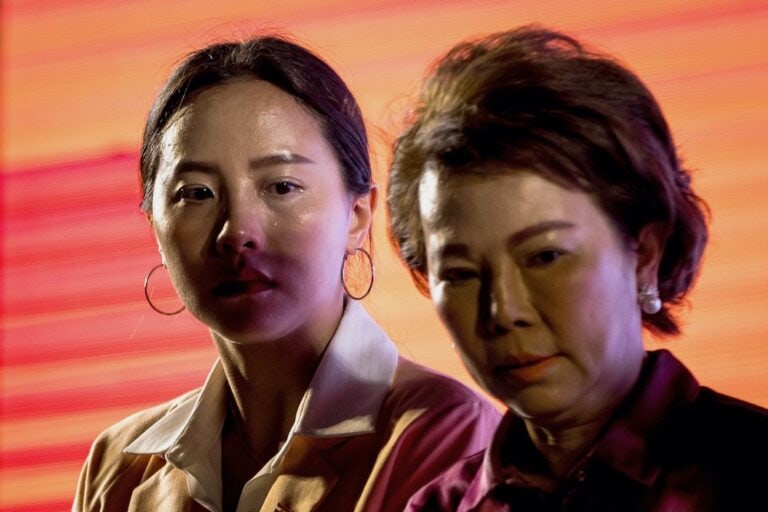On 9 May, anti-government protesters besieged five state-owned free-television channels in a bid to force them to stop presenting news about the government.
Southeast Asian Press Alliance (SEAPA) protests in the strongest terms the escalation of intimidation against the media committed by the anti-government People’s Democratic Reform Committee (PDRC) and the government’s Center for the Administration of Peace and Order (CAPO).
In the latest bid to oust the Pheu Thai-led caretaker government once and for all, on the morning of 9 May 2014 the PDRC protesters besieged five state-owned free-television channels in a bid to force them to stop presenting news about the government and only air the PDRC activities.
On the same day, the CAPO issued a statement urging the five stations not to link their frequencies to the PDRC’s broadcast and maintain their routine reports on the latter’s activities as this would be construed as lending support [to the opposition].
The action by both sides is a grave violation of the Thai Constitution’s Section 45 on freedom and liberties of the people, stating that “the prohibition of a newspaper or other mass media business from presenting information or expressing opinions in whole or in part or imposition of interference by any means in deprivation of the liberty under this section shall not be made except by virtue of the law….”
It also endangers the right of the people to access to information during this time of heightened political crisis during which the public needs all information available in order to act accordingly.
PDRC’s surrounding of the TV stations followed the Constitutional Court’s 7 May ruling on the transfer of the former national security chief which ousted caretaker Prime Minister Yingluck Shinawatra and nine other cabinet members involved in the transfer two years ago. Despite this, protesters demanded that all remaining caretaker cabinet members resign and a new interim government be appointed .
On the day of ruling, PDRC guards also attacked and tried to abduct German freelance journalist Nick Nostitz, while he was waiting for the ruling in front of the Constitutional Court. It was the second attack on Nostitz who is accused by protesters of being a ‘red-shirt’ journalist.
SEAPA reiterates that under no circumstance must any media personnel or news organisation be forced to report in favor of one side or the other. Instead, state and non-state actors must uphold the editorial independence of the media, guaranteed under the Constitution, and allow them to use their own judgment to publish information in the interest of the public.
On 9 May PDRC protesters managed to enter the compounds of Channels 5, 7 and 11 without strong resistance but had to negotiate for hours with executives of Channels 3 and 9 before being allowed inside.
The protesters’ three-point demands include allowing soldiers to replace police as guards to the TV stations, broadcasting PDRC’s activities about the rally, and ceasing coverage of all government activities.
PDRC’s actions against the free-to-air television is nothing new. Since a rally to topple the government started in November 2013 – marred by violence and threats against local and foreign media, and news outlets – demonstrators have at least twice surrounded all six channels, including the Thai Public Broadcasting Service (TPBS) briefly, to pressure them to report in their movement’s favor.
This time the protesters vowed to camp in the compounds until their demands are met. However, they chose not to seize the Thai Public Broadcasting Television saying it reported in the interest of the public.
SEAPA joined the Thai Broadcast Journalists Association and the Thai Journalists Association in calling on the political movement to stop using this undemocratic means to intimidate the media.



